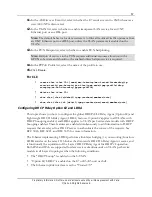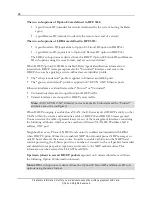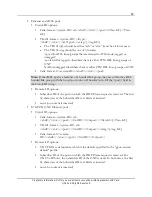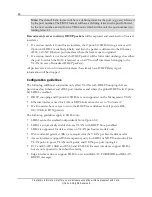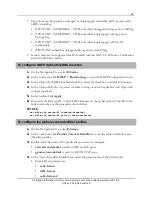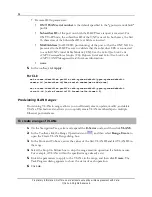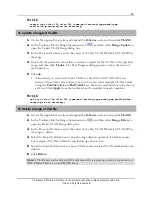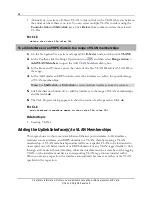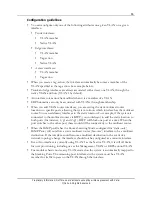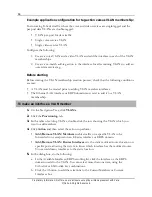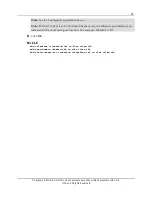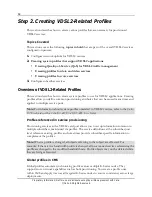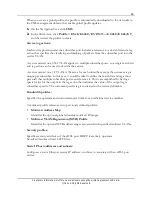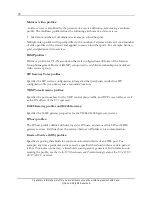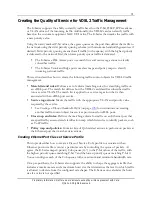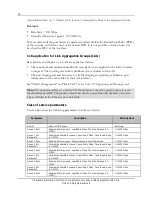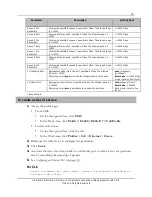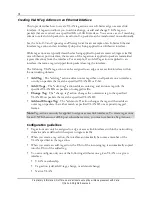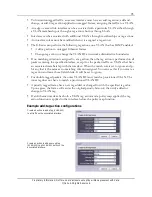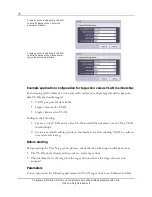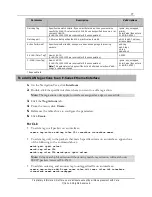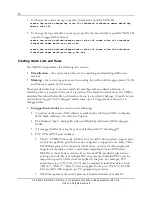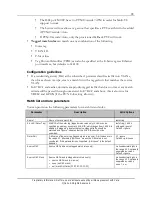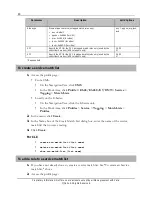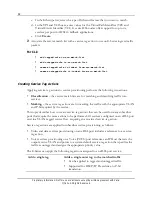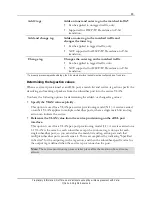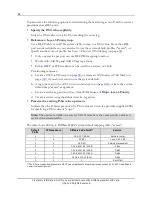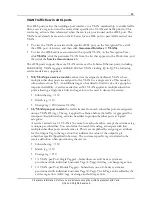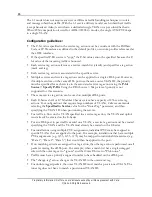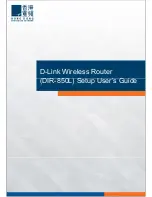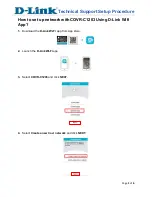
71
Proprietary Information: Not for use or disclosure except by written agreement with Calix.
© Calix. All Rights Reserved.
Creating the Quality of Service for VDSL2 Traffic Management
The E-Series supports the ability to classify traffic based on the P-bit, DSCP, IP Precedence,
or VLAN values of the incoming traffic. Additionally, the VDSL2 card can classify traffic
based on the customer equipment MAC OUI value. The E-Series then marks the traffic with
a new priority value.
Using the newly marked P-bit values, the egress queues on the port then deliver the traffic to
the network using the strict priority queuing scheme (with minimum bandwidth guarantees if
desired). Strict priority queuing means that all traffic (in the queues) with the highest priority
is delivered to the network first, then lower priority queue traffic is delivered.
The E-Series xDSL Access ports use match lists and service tag actions to classify
subscriber traffic.
The E-Series Trunk and Edge ports use class maps and policy maps to classify
incoming network traffic.
This section describes how to create the following traffic-control objects for VDSL2 traffic
management:
Match list and rules:
Defines a set of criteria (matching rules) for classifying traffic on
an xDSL port. The match list defines how the VDSL2 card classifies subscriber traffic
into a service VLAN. The match list is applied to a service tag action that is then
associated with an xDSL port service.
Service tag actions:
Marks the traffic with the appropriate VLAN and priority value
required by the service.
See
Creating an Ethernet Bandwidth Profile
(on page
105
) for instructions on creating
another traffic-control object for services provisioned on xDSL ports.
Class map and rules:
Defines the matching criteria for traffic on an Ethernet port that
are specified by an associated classification map which lists rules to identify packets, such
as VoIP traffic.
Policy map and policies:
Contains lists of QoS-related actions to perform on packets at
the Ethernet port that match certain criteria.
Creating Ethernet Port Class of Service Profile
This topic describes how to create a Class of Service (CoS) profile to associate with an
Ethernet port so traffic is sent at a particular rate by controlling the queue of packets. At
egress, the E-Series maps 8 priority CoS queues (0–7) to the P-bit values of the traffic, with
the highest priority queue matching P-bit 7 and the lowest priority queue matching P-bit 0.
You can configure each of the CoS queues with a maximum and minimum bandwidth rate.
On a per-port basis, the E-Series also supports the ability to shape the aggregate traffic that
includes a maximum rate and a maximum burst size that determines the level to which traffic
is allowed to deviate from the configured rate shaper. The E-Series auto-calculates the burst
size if a value is not specified.

